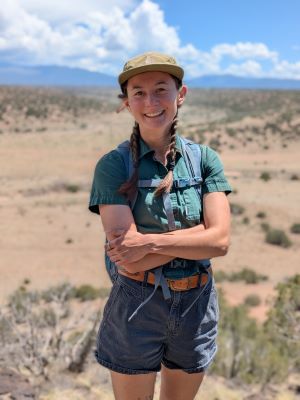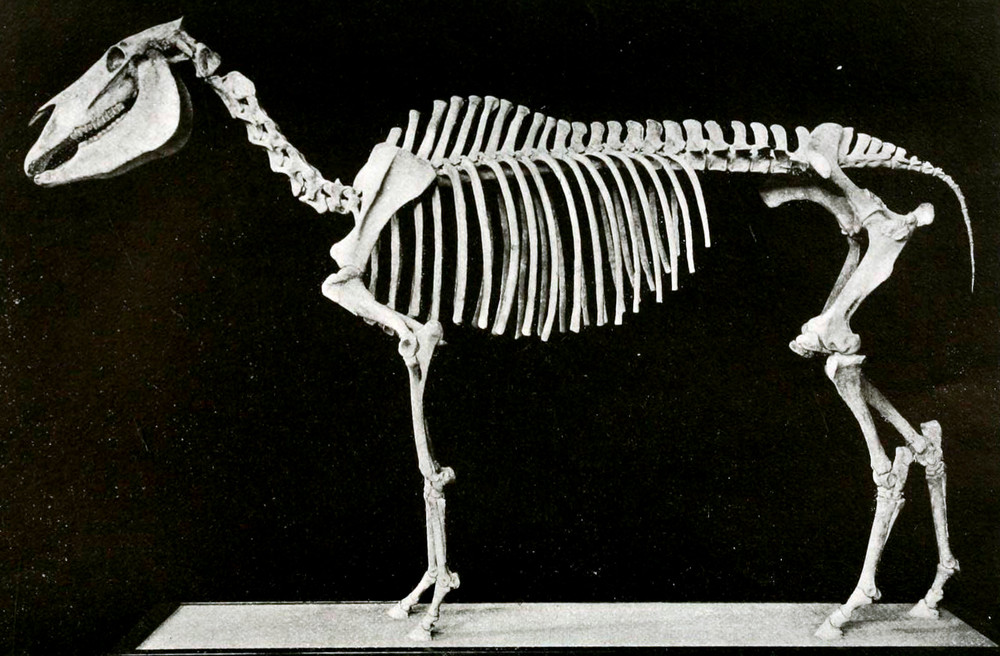Larkin Chapman Awarded NSF Dissertation Improvement Grant
Departmental News
Posted: Aug 06, 2025 - 12:00pm

Larkin Chapman, doctoral candidate in Archaeology, has been awareded an NSF Dissertation Improvement Grant for her project Assessing Support for Human-Caused Extinction of Pleistocene Horses in the Radiocarbon Record.
Abstract
The cause of the loss of 38 genera of megafauna in North America at the end of the last ice age has been the cause of considerable anthropological, paleontological, and ecological debate. One of these taxa, the North American Pleistocene horses (Equini, or the combined genera of Equus and Harringtonhippus) have featured centrally in megafaunal extinction debates. Pleistocene Equini specimens are not as well dated as other key megafauna taxa, which has made advances in research about their extinction challenging. Using radiocarbon dating and stable isotope paleoecology, we seek to address the following overarching question: given our understanding of Paleoindian prey choice, the radiocarbon record, and horse paleoecology, is there evidence for human contribution to the extinction of Pleistocene horses in North America?
Published radiocarbon dates for Equini indicate that humans and horses shared the landscape in North America for a period of time. However, the low number of dates has forestalled the establishment of a terminal date for Equini in North America. We aim to generate more direct radiocarbon dates on horses from the terminal Pleistocene. This will increase the robustness of the estimates of extinction timing and our understanding of the temporal overlap of horses and Paleoindian groups.
 With new radiocarbon dates, we will be able to develop a chronology for the timing of their continent-wide extirpation. Using stable isotope analysis of terminal Pleistocene horse remains, we will look at change over time leading up to extinction to map the possibilities of extinction due to dietary restriction and inter-specific competition. More radiocarbon dates using modern pretreatment methods on both new and previously dated specimens will test this overlap so horse exploitation can be assessed with confidence.
With new radiocarbon dates, we will be able to develop a chronology for the timing of their continent-wide extirpation. Using stable isotope analysis of terminal Pleistocene horse remains, we will look at change over time leading up to extinction to map the possibilities of extinction due to dietary restriction and inter-specific competition. More radiocarbon dates using modern pretreatment methods on both new and previously dated specimens will test this overlap so horse exploitation can be assessed with confidence.
The models used to estimate extinction timing and population dynamics prior to extinction will be tested with multiple ‘tiers’ of radiocarbon dates, where dates run using differing pretreatment methods will be grouped and modelled separately to assess how the model results change based on the reliability of the radiocarbon data input. This will influence archaeologists’ understanding of the radiocarbon record and address concerns related to the quality of the radiocarbon dates with which we rely on to draw conclusions.
